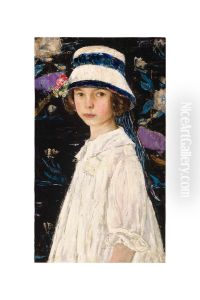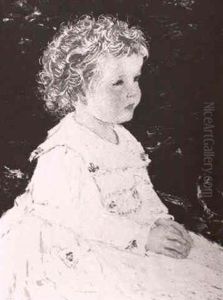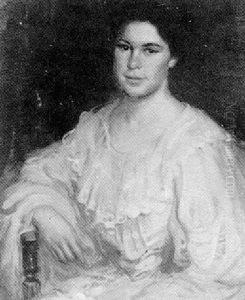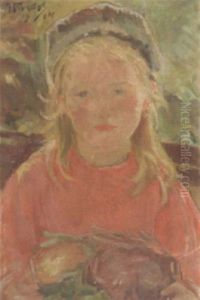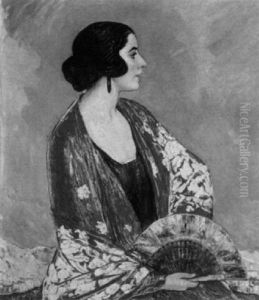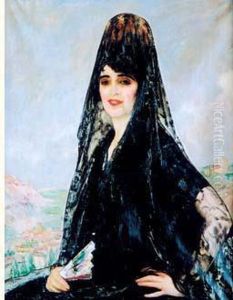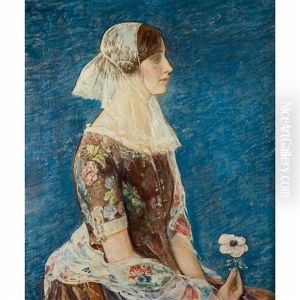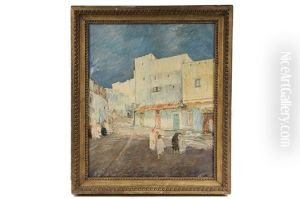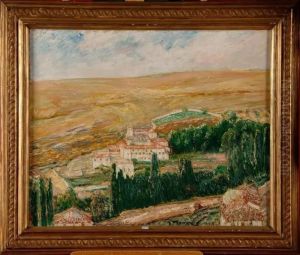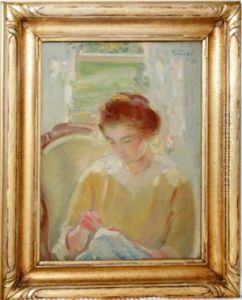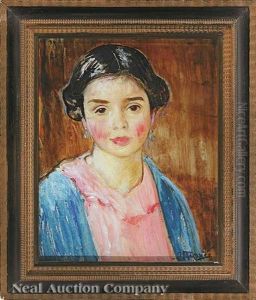Maurice Fromkes Paintings
Maurice Fromkes was an American artist known for his portraits, landscapes, and figure paintings. Born in 1872 in Kozlov, Russia (now in Poland), Fromkes immigrated to the United States in 1890 at the age of 18. Settling in New York City, he became part of the vibrant art scene of the early 20th century.
Fromkes initially studied at the National Academy of Design and later at the Art Students League in New York. He was a student of William Merritt Chase, a prominent American Impressionist painter, which had a significant influence on his artistic development. Fromkes' style incorporated the loose brushwork and vibrant color palette characteristic of Impressionism, though he also integrated aspects of Realism into his work.
Throughout his career, Maurice Fromkes received considerable acclaim, including awards at various exhibitions. He was particularly recognized for his portraits, which were commissioned by many prominent individuals of his time. In addition to portraiture, he painted scenes from his travels abroad, including landscapes and daily life in Europe. Fromkes was a member of several art organizations, including the National Academy of Design, the American Federation of Arts, and the Salmagundi Club.
In the 1920s, Fromkes relocated to Spain, where he was inspired by the rich culture and the Mediterranean light, both of which are evident in the works from this period. He spent a significant amount of time in the artist colony of Pollença on the island of Mallorca, where he continued to develop his style and technique.
Maurice Fromkes' works were widely exhibited during his lifetime, and his paintings are included in the collections of various museums and galleries across the United States. His legacy as an artist is marked by his dedication to capturing the essence of his subjects, whether it be through the intimate portrayal of a sitter in a portrait or the atmospheric qualities of a landscape. Fromkes passed away in 1931, leaving behind a body of work that continues to be appreciated for its artistic merit and historical significance.

